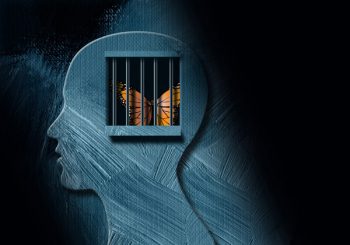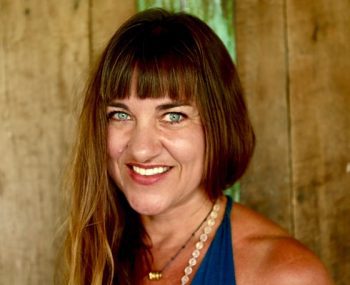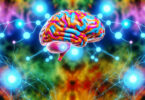Guest writer for Wake Up World
“Sometimes I wake up & have to remind myself: ‘There is nothing wrong with me. I have patterns to unlearn, new behaviors to embody and wounds to heal. But there is nothing wrong with the core of me and who I am. I am unlearning generations of harm and remembering love. It takes time.’” -Yolo Akili
“If you want to go quickly, go alone. If you want to go far, go together.” -African proverb
This month, I did a three day deep dive on Bainbridge Island near Seattle with the founder of The Trauma Foundation Chris Rutgers, trying to solve the problem of democratizing effective trauma healing tools for anyone with physical or mental health-related trauma symptoms who is ready to do the hard, slow inner work.
In order to tackle the task at hand, we started with trying to answer the question “What really safely and effectively heals trauma?” It’s hard to scale trauma healing in an affordable, accessible delivery method beyond the one-on-one format if we can’t find consensus about what works and what doesn’t.
We started by noodling this question ourselves and doing our best to synthesize what both of us have learned from our ten years of study of healing and trauma recovery. Between the two of us, we have studied the work of trauma healing, resilience, and emotional mastery model-builders like Richard Schwartz (Internal Family Systems), Asha Clinton (Advanced Integrative Therapy), Peter Levine (Somatic Experiencing), Kathy Kain and Steven Terrell (Nurturing Resilience), Steve Hoskinson (Organic Intelligence), Deb Dana and Stephen Porges (Applied Polyvagal Theory), Cynthia Price (Mindful Awareness in Body Oriented Therapy), Laurence Heller (NeuroAffective Relational Model), Nkem Ndafo (The Resilience Toolkit), Dawson Church (Emotional Freedom Technique), Sensorimotor Psychotherapy (Pat Ogden), Gabor Mate (Compassionate Inquiry), Karla McLaren (Dynamic Emotional Integration), Somatic Transformation (Sharon Stanley), EMDR (Francine Shapiro), and Thomas Hubl (Collective Trauma Healing), to name a few. Chris read 83 books about trauma. I’ve read about 30. So we’ve learned a few things and have some opinions about what seems consistent between model builders and where various healing methods seem to overlap.
As research for my book Sacred Medicine, I have also spent ten years studying many trauma-supportive healing methods, such a yoga, Tai Chi, Qigong, acupuncture, sound healing, meditation, mind-body medicine practices, embodiment dance practices like Open Floor Dance (Kathy Altman & Lori Saltzman), 5 Rhythms (Gabrielle Roth), and Nia (Debbie Rosas), creative practices like Intentional Creativity (Shiloh Sophia) and energy healing models like those created by Donna Eden (Eden Energy Medicine), William Bengston (Bengston Energy Healing Method), and Eric Pearl (Reconnective Healing).
When it comes to trauma healing, Chris and I each have our biases and areas of greater education and training. He’s more focused on somatic and touch-based therapies, while I have more expertise and experience in Internal Family Systems (IFS) and the energy psychology method Advanced Integrative Therapy (AIT.) We both believe that many trauma healing modalities have great benefits, and all of them also have limitations and potential side effects and contraindications, just as a pharmacopoeia of medicines all have different indications and different side effect profiles. One size never fits all, and no medicine- pharmaceutical or trauma healing or energy healing or nutritional healing- ever fits all. Our goal was to try to figure out which methods work best for which trauma survivors, in which order, and at what pace.
Developmental trauma expert and co-author with Oprah Winfrey of What Happened To You? Bruce Perry, MD created the Neuro-Sequential Model Of Therapeutics to apply to children and help triage which modalities might be best used when. But given that most therapists are not cross-trained like our “unicorns,” therapists tend to see all trauma as one kind of nail and they hammer it with whatever they might have chosen to get trained in outside of grad school, since most of the effective, cutting edge trauma healing methods aren’t even taught in grad school, which primarily teaches therapists to use Cognitive Behavioral Therapy (CBT).
Of course, in a one-on-one practice, healing methods would be individualized, like you’re concocting a unique recipe every time that might mix and match various elements of different healing methods- 2 parts IFS, 1 part psycho-education about polyvagal theory, 1 part energy psychology, 1 part EMDR, and 2 parts Somatic Experiencing. But very few therapists get even one certification in a cutting-edge trauma healing method outside graduate school. Even fewer are cross-trained in multiple modalities, which is why we’re calling them the “unicorns.” Short of expecting therapists to seek out many additional certifications, could we get therapists to agree upon some consensus of what is needed to heal trauma?
To attempt to answer that question, we sought out “unicorn” therapists, those who are cross-trained in many trauma healing methods and are not die-hard evangelists of only one method. I also crowdsourced this question on social media, since there is great wisdom in the room in our online spaces, which are populated by many experts in trauma healing. Before I arrived for our mastermind session, Chris and some unicorns had already broken down their understanding of what heals trauma into five categories. We played with listing various trauma healing methods under each category. None of the existing trauma healing methods, in our assessment, hit each bucket, but many hit a few.
1) PSYCHOEDUCATION:
We found that, especially for more cognitively-minded trauma survivors, understanding why we are the way we are and why we do the things we do is helpful in developing not only insight but also self-compassion. This includes understanding the difference between shock trauma and developmental trauma, beefing up on polyvagal theory so we can grok what happens in the traumatized autonomic nervous system, learning psychoneuroimmunology, and raising awareness about how to recognize common trauma symptoms, such as dissociation, disembodiment, addiction, chronic pain, and pretty much all mental health disorders. It can be helpful for trauma survivors to understand how they may be vulnerable to using spirituality to prevent them from feeling the uncomfortable feelings trauma elicits via “spiritual bypassing.” Learning the depathologizing lens of Internal Family Systems (IFS) on “parts” of ourselves that might be hard to love helps some people develop a compassionate, humanizing lens that builds shame resilience and promotes authentic self-love. Psycho-education also helps us understand why other people behave the way they do and helps us have a more compassionate lens on those who traumatized us, allowing us to strengthen our sense of self-worth, see the big picture from a less self-absorbed lens, and transform our narratives about who we are, how the world is, and how we belong in it. Especially for those of us who intellectualize as a defense strategy against uncertainty and feeling emotions, learning what’s happening inside can be empowering and comforting. Understanding Autonomic Nervous System Dysregulation, IFS, NeuroAffective Relational Model (NARM), and Deb Dana’s Polyvagal Theory in Therapy work are all really good at hitting this bucket.
2) UNDERSTANDING ADAPTIVE SURVIVAL STRATEGIES:
As a subset of psychoeducation, this bucket refers to the cognitive awareness of why we develop the intelligent defense strategies, coping skills, and “protector parts” we learn as a way to survive trauma. Although these once adaptive strategies can become maladaptive after the acute phase of the trauma has passed, we often get stuck in old ways of being and need to learn new, healthier ways of being and behaving. Healing tools such as Internal Family Systems (IFS) and NeuroAffective Relational Model (NARM) work well for this aspect of healing trauma. They help us have compassion for ourselves and facilitate shame resilience so we can tolerate doing our shadow work without getting flooded or turning away from the darkness trauma injects into us all. IFS is particularly helpful in this case because it introduces the idea that we’re likely to double down on our survival strategies until we understand them, work with them, and heal what they think they’re protecting us from.
3) EMBODIMENT/SOMATIC MINDFULNESS:
This category covers tools meant to help trauma survivors get back in their bodies, become more sensitive to internal bodily sensations, and develop “interoception,” the ability to feel your body and feel your emotions in your body so you can perceive the state of your nervous system (ventral vagal, sympathetic, dorsal vagal). Developing accurate interoception helps you track how your autonomic nervous system state can create your story. For example, if your nervous system is threatened when it’s actually safe out there, your mind might make up a paranoid delusion to try to make sense of your faulty “neuroception” (when your nervous system inaccurately perceives safety as unsafe and danger as falsely safe.) Healing tools such as Somatic Experiencing (Peter Levine), Kathy Kain and Stephen Terrell’s Nurturing Resilience work, Somatic Transformation (Sharon Stanley), Neuro Affective Relational Model (Larry Heller), Mindful Awareness in Body Oriented Therapy (Cynthia Price), Organic Intelligence (Steve Hoskinson), Sensorimotor Psychotherapy (Pat Ogden), dance, yoga, martial arts, qigong and Tai Chi, expressive arts therapy, certain kinds of energy healing and bodywork can all help with this aspect of healing trauma.
4) NERVOUS SYSTEM REGULATION:
Perhaps the hardest to achieve aspect of healing trauma, nervous system regulation, refers to maintaining and restoring access to the healthy ventral vagal branch of the parasympathetic nervous system whenever a real threat is not present. Because so many trauma survivors live most of their lives in either the sympathetic (fight or flight) or the dorsal vagal parasympathetic (freeze) states, many trauma survivors have little access to the true rest, restore, repair, and connected state of the nervous system. Healing trauma depends upon the neuroplastic aspects of the nervous system and often means the nervous system needs to be completely rewired, which can be a tricky and slow process. Theoretically, ALL healers should be hitting this bucket by bringing their own ventral vagal, regulated nervous systems to the trauma survivor, entraining them into this healing frequency. But in reality, if you put many healers, doctors, and therapists on monitors, the majority of them are dysregulated themselves because of their own traumas. So by definition, the healer needs to first heal thyself. Theoretically, all trauma healing methods, all energy healing methods, and all bodyworkers should help hit this bucket, though this is not always the case. For co-regulation, Regulation & Resilience (Kathy Kain/Steve Terrell), Neuro Affective Relational Model, Somatic Transformation, Mindful Awareness In Body Oriented Therapy, and Sensorimotor Psychotherapy may lend specific support to this bucket.
5) METABOLIZING IMPLICIT SENSATIONS, EMOTIONS & MEMORIES:
The first order of business when healing trauma is to help clients widen their window of tolerance, so they’re resourced, oriented, present, and embodied enough to move deeper into the healing process, which usually requires facing the traumatic memories head-on, but only when the timing is right. Somatic Experiencing and other somatic therapies use a variety of exercises that are beyond the scope of this book to achieve this goal, but in general, those with severely dysregulated nervous systems tend to need to build a sense of safety, somatic support, and relational support with a skilled somatically oriented therapist before being capable of cognitive support or too much emotional intensity, which can lead to dissociation. Somatic therapies like Somatic Experiencing and NeuroAffective Relational Model (NARM) support clients through grounding, orientation to surroundings and the present moment, tracking and reflecting when clients disconnect and dissociate, use of positive resourcing (such as remembering a safe person), titration of how much emotion the client can tolerate without dissociating, pendulation between expansion and the inevitable contraction that follows moments of greater connection, leaning in and leaning out of discomfort safely, mirroring what the body is doing, facilitating somatic discharge of hyper-aroused energies that can get stuck in the body, and gently challenging distorted identifications and beliefs. Safe touch, gentle eye contact, and sometimes bodywork may be used by somatic therapists to help co-regulate the body and heal attachment wounding.
Once the client is better able to self regulate a dysregulated nervous system and expand the window of tolerance of body sensations, emotions, and challenging of cognitive distortions and core negative beliefs, many cutting edge therapies focus on facilitating memory reconsolidation, as described by Bruce Ecker, Robin Ticic, and Laurel Hulley in their book Unlocking the Emotional Brain. Therapists know the tenacity with which emotional memories can “stick” in the brain, and we used to believe that these memories might be indelible and ultimately incurable. Fortunately, we now know this is untrue because of a process called “memory reconsolidation,” which allows new neural pathways to relearn and erase old pathways in the brain, not just suppressing the deep, unconscious, intensely problematic emotional lessons that result from trauma, but developing healthier pathways into those old grooves in the brain. In their research Ecker, Ticic, and Hulley found three things necessary to create radical and permanent long-term change:
-Exposure to vividly reimagining and revisiting the traumatic event (with care not to overwhelm the system.). Expecting severely dysregulated clients to recall their memories too soon can be retraumatizing, but neuroscientists seem to think some degree of this is necessary to remodel neural pathways caused by trauma. There seems to be some controversy among the therapists and healers I interviewed regarding whether this is necessary in all cases, but most agree upon this necessary aspect of healing trauma.
-A juxtaposition experience. To create new neural pathways, you must juxtapose a neutral or pleasant cue with the traumatic memory or belief. In other words, you’re now thinking and reliving that old painful memory—with all its relevant emotions and limiting beliefs, only now you’re with a therapist- as your mature adult self- so you can have a different experience of the same memory. You return to the event, create a new experience that contradicts the old because now there’s a loving presence and you are not alone, isolated, powerless, and helpless.
-Repetition. You retravel this new neural pathway enough to solidify it. Repetition allows you to experience this new emotional state often enough that it overrides the old neural pathway. The memory is still there. You haven’t forgotten it, but it’s neutralized.
Essentially, when old trauma is brought to the surface, a “reconsolidation window” opens for healing and repatterning. Once you remember and evoke the memory and emotions, you’re in the thick of the traumatic memory, as if you’ve time-traveled back to the original experience. All the synapses become labile, so this is the window during which memory reconsolidation must happen. If you just review old trauma with talk therapy, you may experience catharsis or comfort from having your story witnessed, but if you don’t override neural pathways, you may strengthen the problematic one by retelling your traumatic story. Treatment that helps remove traumatic energy and integrate fragmented aspects of the psyche has to be delivered during that labile reconsolidation window. Many will try to sell you the “quick fix” sell that you can get your trauma surgically excised without any painful feelings, but from my research of neuroscience, this attractive assertion did not seem to be true.
Can a healer override that neurological process by moving your energies around? Probably not, according to the majority of therapists I queried. Someone may feel like they’ve gotten relief from trauma or from a trauma-induced illness through hands-on healing or a spiritual healer, but unless the traumatized individual catalyzes a true and lasting change of consciousness, the old neurological grooves are still there. It’s more like a bandage that, while offering temporary relief, may still leave someone vulnerable to being retraumatized the next time something in the environment or an experience retriggers the original neural pathway. The good news is that innovative trauma therapies allow traumatized individuals to engage in those three factors necessary for memory reconsolidation.
One thing that seems clear is that there is no “one size fits all” solution to treating trauma. The best therapists are not rigidly attached to one model. They are gifted in many trauma healing tools and are flexible, labile, and creative, able to customize the approach to each individual client, depending on what arises in the moment. While mastery is always important, the method itself may be far less important than the attunement, care, open heart, loving awareness, and degree to which a therapist has treated her own trauma and can be present for the client, especially for those with developmental trauma and the attachment wounding that accompanies it.
This refers to the “memory reconsolidation” aspect of trauma healing. Memory reconsolidation, which allows new neural pathways to relearn and erase old pathways in the brain, not just suppressing the deep, unconscious, intensely problematic emotional lessons that result from trauma, but developing healthier pathways into those old grooves in the brain. 3 things are necessary for memory reconsolidation: 1) Exposure to vividly reimagining and revisiting the traumatic event (with care not to overwhelm the system.) 2) A juxtaposition experience- to create new neural pathways, you must juxtapose a neutral or pleasant cue with the traumatic memory or belief. 3) You retravel this new neural pathway enough to solidify it. Repetition allows you to experience this new emotional state often enough that it overrides the old neural pathway. The memory is still there. You haven’t forgotten it, but it’s neutralized. Tools to help hit this bucket include Internal Family Systems (IFS), energy psychology tools like Emotional Freedom Technique (EFT) or Advanced Integrative Therapy (AIT), Somatic Experiencing, EMDR, Sensorimotor Psychotherapy, Regulation & Resilience, Neuro Affective Relational Model, Somatic Transformation, Somatic Experiencing (Peter Levine), Organic Intelligence (Steve Hoskinson), Mindful Awareness in Body Oriented Therapy.
I added a few more categories (with your help!) to Chris’s five:
6) RESOURCING & MEANING MAKING:
(As in, reSourcing) For some people, resourcing might be about getting basic survival and self-care needs met. It’s pointless to try to heal trauma if everyday life is still retraumatizing you. So if you’re homeless, you’ll need shelter. If you’re hungry, you’ll need food. If you’re in an abusive relationship, you’ll need to get safe. If you’re an addict, you’ll need rehab. If you’re sick, you may need to get medical help to relieve symptoms until you can treat the trauma that might be causing those symptoms. If you’ve been putting all your attention on caregiving others, you’ll need to be relieved of most, if not all, of your caregiving responsibilities.
Then you’ll need to take stock and inventory the resources you do have. Are there social services you can call upon? Who is available and concerned enough to help care for you during your recovery period? What helps your nervous system settle? Nature? Animals? Exercise? Meditation? Massage? Art? Music? You’ll need to know what helps you settle so if things get hard, you’ve got your go-to tools to improve your resilience.
For many trauma survivors on a journey to recovery, your spirituality is your ultimate, ever ready, always available reSourcing tool- a way to reconnect the disconnection inside, to tap into Source as a way to transfuse yourself with life force and remember who you really are at the core of your being. This is likely why so many people feel like 12 Step programs help them- because there’s a spiritual surrender to something Larger than allows the defense strategies to relax just the slightest bit. While some of the more scientifically-minded might deny that spirituality is helpful in healing trauma, I have yet to meet a trauma survivor with an effective recovery process who didn’t rely on some sort of Higher Power, whether that be an inner spark, an outer God, the spirits of nature, or some sort of “energy” or “consciousness” believed to be larger than the small human ego or will. While spiritual bypassing practices can be contraindicated for trauma survivors and can actually be retraumatizing, spiritual practices like trauma-informed, non-dissociative, embodied meditation practices, pilgrimages, trauma-informed yoga, expressive arts therapy, Intentional Creativity, mindful self-compassion, and faith-based or energy healing tools can be beneficial as a reSourcing method. Included in this bucket might be meaning-making- a way to contextualize and even perhaps find gratitude for the way your trauma helped you develop psychologically and spiritually and gave you certain gifts you get to keep once you’re far enough along in your recovery process.
7) TREATING NEGATIVE CORE BELIEFS, INSTALLING A NEW IDENTIFY & REWRITING YOUR STORY:
Because trauma distorts our thinking and causes limiting beliefs that can impact us our whole lives, identifying and treating those distortions after the traumas that have caused them are healed, can improve functioning and quality of life. Creating a new authentic identity and positive self-regard while installing the qualities and beliefs that did not develop normally after removing all the toxic conditioning can help support an entirely new sense of beingness as you rewrite the story of who you are and why you went through all this suffering on the other side of healing trauma. Energy psychology tools like AIT, Cognitive Behavioral Therapy (CBT,) IFS, narrative medicine tools, certain kinds of spiritual self-inquiry practices, and mystical practices can all help hit this bucket.
8) COMMUNITY:
Although it’s very American to believe everything can be accomplished in a rugged individualistic self-help manner, most trauma happens in unhealthy relationships and therefore must be healed with the support of safe, healthy relationships. While a one-on-one healing relationship with a trauma therapist, doctor, bodyworker, or healer may be a good starting place, just as people in recovery from addiction need their 12 step groups, people in recovery from trauma need the support of safe, supportive, non-judgmental others who are also in recovery, who are trying to live healthy, authentic, Self-led lives. Some people may find this kind of safe community in faith-based communities, though many in religious circles are themselves traumatized and not in recovery. Some might seek out New Age spiritual communities, though those are often guilty of spiritual bypassing. Part of what supports trauma recovery is realizing that the ways you’ve been to hell and back can help people who are still in hell, which is why we’re adding a peer-to-peer aspects to the community-based trauma healing recovery program we’re working on in the non-profit program I’m developing- Heal At Last, a peer support, group trauma healing community. When we look at Maslow’s hierarchy of needs, there was one more rung above self-actualization that he added on before he died-to serve others, to participate in being part of the interdependence of a functioning compassionate society.
We’re trying to sort out first, what heals trauma, and then, how do we deliver those tools in a group setting? Which, if any, of these healing tools are scalable, and which have to be delivered only in a one on one setting. It feels like Mission Impossible, but I pray about it every day- “God, if you really want this to happen, please help us.” We can’t do this without a bunch of miracles, so add us to your prayers and intentions please. And go to our Heal At Last website and sign up for our list if you want to help in some way!
What did Chris and I miss? Your crowdsourcing help would be most welcome here! Any key buckets we neglected to include?

Originally published at lissarankin.com and reproduced here with permission.
Recommended articles by Lissa Rankin:
- How To Honor Your Desires Without Grasping, Denying or Bypassing
- Pleasure as a Spiritual Path
- The Unmistakable Link Between Unhealed Trauma and Physical Illness
- Satisfying Our Emotional Needs Without Being Codependent
- Relationships on the Spiritual Path
- How to Make Your Body Ripe for Miracles
- Are You “Spiritual But Not Religious?”
- 10 Fun Ways to Reduce Your Cortisol Levels
- 6 Stories To Make You Believe In The Power Of The Mind To Heal You
- 7 Tips For Finding Your Tribe
About the author:
Lissa Rankin, MD is a mind-body medicine physician on a grass roots mission to heal healthcare, while empowering you to heal yourself. She is the founder of the Whole Health Medicine Institute training program for physicians and healthcare providers, and the New York Times bestselling author of the books Mind Over Medicine: Scientific Proof That You Can Heal Yourself (2013), The Fear Cure (2014), and The Anatomy of a Calling (2015).
Lissa blogs at LissaRankin.com and created the online community HealHealthCareNow.com. She is also the author of several other books, a speaker, a professional artist, an amateur ski bum, and an avid hiker. She lives in the San Francisco Bay area.
Connect with Lissa on Facebook and Twitter, or visit LissaRankin.com.

If you've found value in our articles, we invite you to support the release of our brand-new book, "Gratitude Practices for Kids: A Practical Guide for Adults to Instill a Spirit of Appreciation and Positivity in the Next Generation."
"Gratitude Practices for Kids" brings together over 25 innovative and accessible practices designed to enhance gratitude in everyday life. This comprehensive guide is backed by 17 scientific studies, ensuring each concept is grounded in research, underscoring our commitment to nurturing growth, emotional intelligence, and positive interactions between adults and children.
We encourage you to opt for the paperback version to celebrate this new release. Dive into its fresh pages away from digital distractions, allowing you to immerse yourself in the transformative practices it offers.
Over recent years, Wake Up World has faced significant online censorship, which has impacted our financial ability to operate. Moving into book publishing represents a strategic step to secure the ongoing funds needed to continue our mission. By purchasing Gratitude for Kids, you help us keep our content free and accessible to everyone, avoiding needing a paywall. With over 8,500 articles published in the last 13 years, we remain dedicated to keeping our valuable content open to all.









